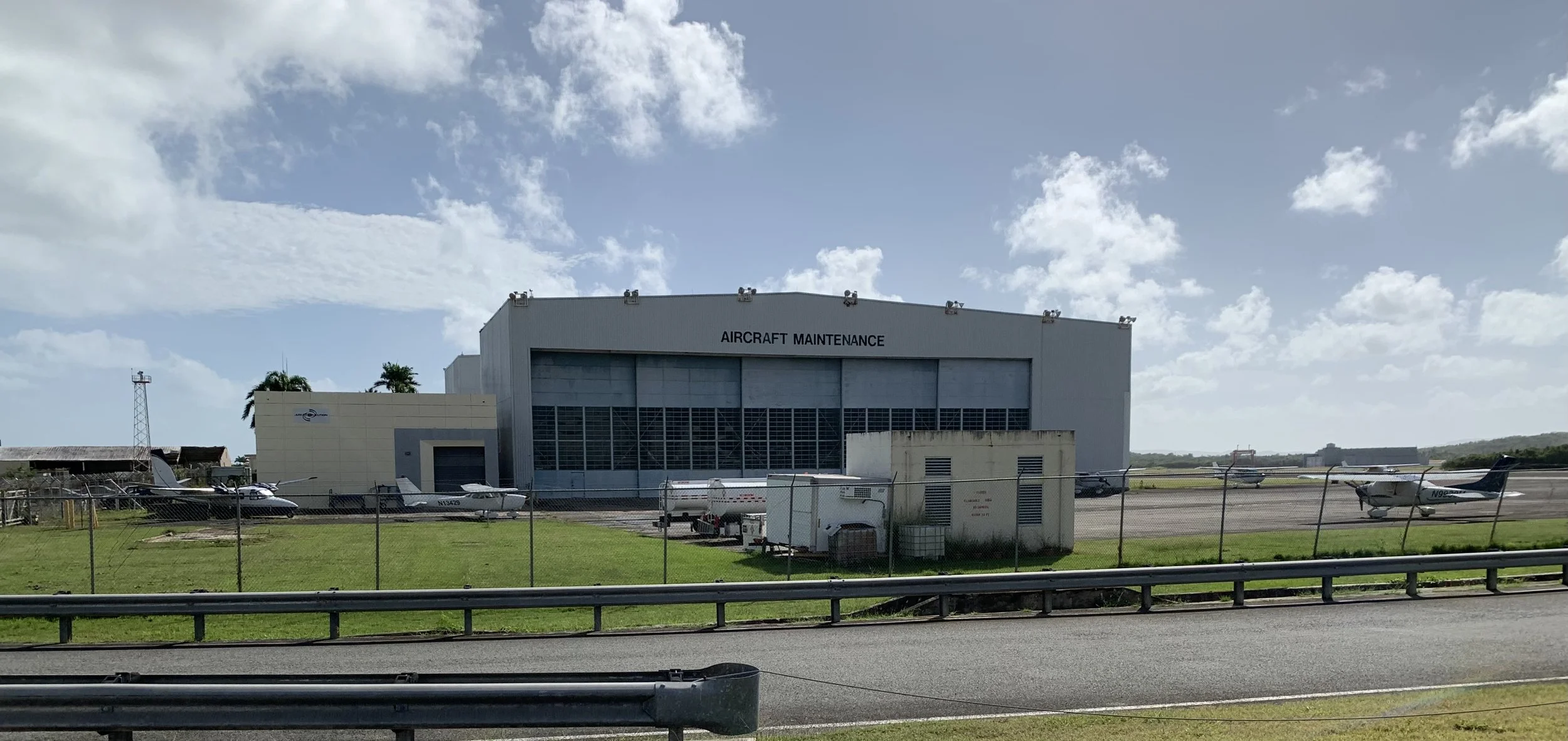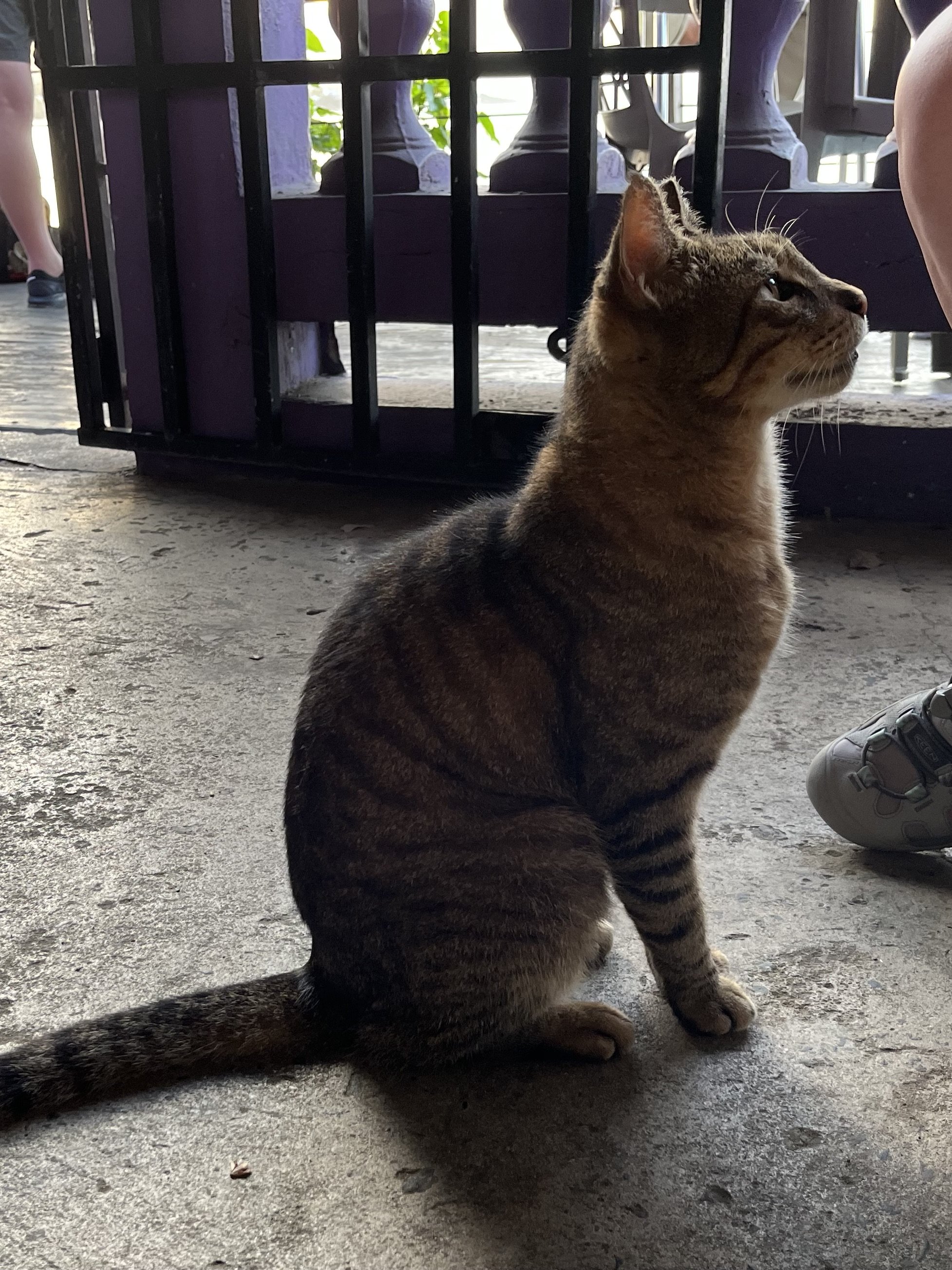New Year, New Adventure - Part 3 of 5
Don’t leave anything edible unattended if these feathered fiends are present. (https://birdfinding.info/greater-antillean-grackle/)
The weather looked less rainy for the third day of unscripted excursions, so we decided to head east, as the Greater Antillean Grackle flies, along route 66. We passed Carolina, Canóvanas, and Río Grande, headed for the foot of El Yunque National Forest. After an hour drive, we arrived at the visitor center and were promptly informed that if we didn’t have a reservation for that day, we were not going any further. We didn’t, and couldn’t get one for that day, or the next. (For a $2 fee, you can reserve a slot by logging into a government website at 0800 and praying for a place in line for the next day. The same system is used for various monuments in D.C. and the like.) When you’re playing it loose, this is going to happen, so we rolled into option B - Keep driving east to see what we could see.
Around the corner from the entrance to El Yunque are the towns of Luquillo, Fajardo and Ceiba. This section of route 3 was familiar territory as it is the home of José Aponte del la Torre Airport, formerly Naval Air Station Roosevelt Roads. It is also the location of the Puerto Rico Ferry dock serving the islands of Culebra and Vieques. Well, that’s fortunate, I’ve always wanted to see Vieques up close. (I saw plenty of it from the air, way back when.) The Captain was game for a ferry ride, so we trucked on over to the dock and bought tickets for the noon boat over and the 1830 back. We still had some time to kill before the ferry, so we did some self-directed touring around the old Navy installation and picked up some sandwiches for later on.
Our big meander was the old airfield. When we pulled up to the gate, formerly guarded by folks in camo and equipped with stuff to make you dead, there was only a bored, unarmed private security guard to smile and wave us through. We followed the lonely road across the marshy grass area to base operations and the hangars. Most of the buildings were still in use, but they were showing their experience. Where Navy jets used to park, there was an assortment of general aviation aircraft. Mostly trainers. The only indication of the former “hum” of the place was a derelict white and red TA-4 Skyhawk, probably from VC-8, devolving back to its natural elements behind a hangar. (https://www.globalsecurity.org/military/agency/navy/vc-8.htm)
The aircraft population is a lot different now.
Looking southwest across the airfield.
When our curiosity about what became of the Naval Air Station was satisfied, we moved on to the ferry dock. Built on another portion of the former base, several miles back from the front gate, the ferry service occupied what used to be the petroleum, oil, and lubricants pier and storage area. A large parking lot that served military equipment was now host to rows and rows of civilian cars, waiting for their drivers to return from the islands of Culebra and Vieques. A passenger waiting area was laid out under several large semipermanent tents and the ferry boats berthed in slips along the tanker pier.
Our trip across the Roosevelt Roads to Vieques was on the vessel Isla Bonita. At first glance, I surmised it was an oil well or wind turbine support boat that had been converted into a ferry. It probably wasn’t, but it shared a lot of features with those vessels, including the fact that whom ever made the design choices regarding passenger safety and comfort was an evil SOB.
The hour long ride was mostly straight into the seasonal trade winds, where a bit of wave action is normal. What’s not expected by the average land-lubber, however, is the effect of the passenger seating location. The boat has two passenger decks, located in the forward part of the hull, completely enclosed and air-conditioned. The first is on the same level as the main cargo area. It has a few small windows about five feet above deck level and groups of vinyl covered airline style seats. The second deck, located directly above it, features the same kind of seating and larger windows, also placed about five feet above deck level. Both spaces had video monitors located at the front, playing movies. From a seated position, it wasn’t possible to see anything but blue sky out the windows. Even a lightly salted mariner can predict what will happen next. While the boat nudged its way into, over or around the waves, I watched half our fellow passengers squirm, groan, or clench their eyes shut while fighting off the rising Mal-de-mare. The motion might have been slightly dampened on the lower deck, but the real solution is stand up, look at something on the horizon, like the destination island, and maybe get some fresh air. While none of these poor folks chunked, it was clearly a close call for some.
The ferry boat routes from Ceiba.
The vehicle/passenger ferry Isla Bonita loading at the Ceiba dock.
The upper passenger deck and spray coming over the bow of the Isla Bonita. Note the head down, eyes closed, praying for deliverance posture of some passengers.
The ferry landing and the town of Isabella Segunda on Vieques.
So, what’s on this delightful tropical island that’s worth a day and a $2 ferry ride? A nature preserve, a couple of little towns, and a former bombing range that is in the process of being reclaimed. (There are also semi-wild horses.) What’s missing? All the hustle and bustle of the bigger island to the west. Because we arrived “late” in the day, we were limited to what we could see on foot, as all the rental cars, bikes and taxis were spoken for. At first, we felt a little disappointed, but after we wandered around for a couple of hours, we felt pretty much at home. We saw some neighborhoods, a few shops that were open, the incomplete Spanish fort- Fortin Conde de Mirasol, and then found a little beach that we had all to ourselves. We spent a lazy afternoon exploring a piece of shore line where we didn’t see another human. That’s a vacation win.
Horses on the street are just a normal thing on Vieques.
This guy gave us directions to the beach.
Wandering the roads of Vieques, we were once again reminded of our “salad days” in the western Pacific.
Waves roll in, waves roll out. Count snails and hermit crabs crawling on the rocks. Ponder the shapes of clouds, and listen to the wind whisper through the palm fronds.
When our little section of northwest facing beach came into shade, we knew it was time to wander back towards town. Up the hill and around the bend, past the 1896 lighthouse El Faro de Punta Mulas. The ferry wouldn’t be along for another hour and a half, so we stopped in at the first bar we came across for a cold beverage. The Tsunami Bar and Grill is just a stone throw from the ferry landing and there were tables with a nice view. After the first round, the manager said she had to close early because of a plumbing/drain blockage issue, so we settled up and headed across the way to the purple painted Saint Voodoo Mar Azul. They were fully operational and had a deck built out over the beach, facing the setting sun. It turned out to be a fine place to hang out for an hour. We ordered food and cold drinks, chatted with some folks from Philly, and watched the sun sink behind the southwest hills of Vieques. The day was rounded out with a mostly uneventful high speed passenger catamaran ferry back to Ceiba (just a couple of queasy riders on an outside deck) and an hour drive to Condado.
The bar cat aggressively begging for handouts. I first became aware of it when it pawed my knee. I jumped a little. Cat!
With the Sun gone, it was time for the ferry back to Ceiba.












